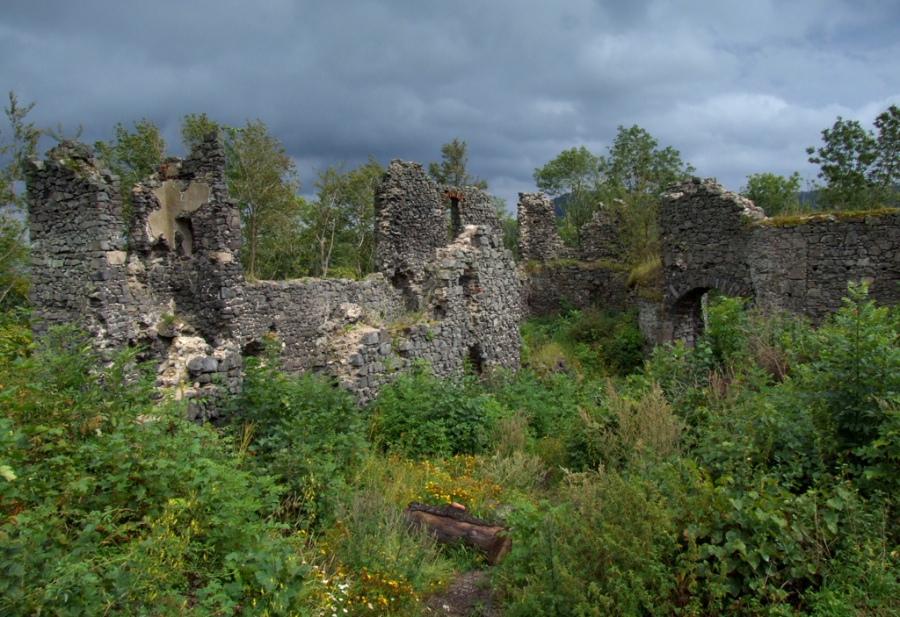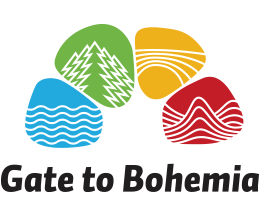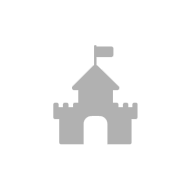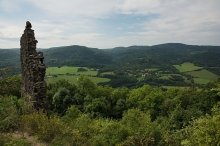Our destination for this trip is the beautiful and historical city of Klášterec nad Ohří. In addition to the spa area and architectural monuments centred around the picturesque square, the main attraction is undoubtedly the local chateau which is a part of the urban heritage protection zone. The construction of this noble residence began sometime around the year 1560, which created the front wing of the building as we know it today. A part of the complex is also the parish Church of the Holy Trinity with Thun's tomb. A large garden with Sala Terrena (a garden pavilion), statues and a castle fountain decorated with a statue of Triton was built around the chateau. After modifications in 1858, the chateau received its English pseudo-Gothic appearance as we may see today and its rectangular tower, located at the northeast corner, was raised by one floor and equipped with a neo-Gothic battlement terrace. During several guided tours we can visit the Museum of Czech porcelain and the exhibition focusing on the manufacture of porcelain in the world, or the chateau complex, the Church of the Holy Trinity with Thun's tomb and the viewing tower.
From Klášterec nad Ohří we will continue around the Eugenie spa house, then go over the bridge to reach the other side of the Ohře River and finally, we will reach the square in Lestkov where we may park our car. We shall start our trip by following the red sign and after about 1 km of steep climbing we will reach the ruins of the Egerberk Castle. The first known owner of the castle, which was built at the turn of the 13th and 14th century, who undoubtedly also used the same name, was Vilém (William) of Egerberk. Within a short time, the castle was inhabited by the Rumburk and Šumburk clan, who sold the castle in 1384 to the Lords of Dubé. The ruins, as preserved until today, originate almost entirely from the period after the major reconstruction of the castle, which probably took place between 1385 and 1395 by Jindřich Škopka of Dubé. The castle is an example of a two-palace layout and it has been evaluated by experts as a very interesting castle from the reign of King Václav (Wenceslas) IV. The northern perimeter walls of the palace, all the way up to the second floor, are still standing. We may see a few preserved openings in these walls, where doors and windows once used to be. One of these openings is still fitted with a beautiful Gothic double arch. From the southwest palace section we may see the rounded front of the enveloping wall, which also offers a nice view of the surrounding forest. From the central castle only sections of the perimeter walls, the basement and foundations of the farm building were preserved. An impressive sight is the torso of the entrance tower gate and especially the road climbing up to the top of the upper castle.
From Lestkov we will return back to Klášterec nad Ohří, where we continue on the E442 main highway towards Karlovy Vary. About 3 km behind the city we will find a turn with an overpass going towards Klášterecká Jeseň and Měděnec. We will take the opposite direction and pass over the crossing to a field road going towards the former Šumburský farmhouse. Here, at the Šumburský farmhouse we may park our car and continue along the path until we reach the first right turn which will take us up a steep hill and finally, to the castle. The mighty castle, originally named Nový Šumburk (New Šumburk) was founded by Vilém (William) of Šumburk sometime during the 1430s and was named after the clan's original residence located in today's Germany. The castle was first described as deserted in the early 17th century. Once we climb up and reach the castle, we are welcomed by the relatively massive walls and the remains of the fortified castle front. The castle ground layout represents an elongated trapezoid. We will enter the castle through the trench and the gate. Inside on both sides we will see remains of the castle walls and residential buildings, including the residential square tower and the new palace. From the top of the ruins we will see a stunning view of the surrounding countryside.
We then get back on the E442 road in the direction towards Karlovy Vary and continue to Perštejn. Here on a significant forested hill in the western section of the village we will see another castle ruins, which will be the last visit of our trip. We may park our car near the pond and turn towards Údolíčko. We shall now follow the blue signs, which, after a short while, start climbing sharply up through a forest and, after a few hundred metres, we find ourselves near a turn that will take us to the castle. The exact date of the castle's establishment is not known, but according to the method of construction and securement we can assume that it was built sometime in the mid-13th century. The castle was built to watch the trade route along the Ohře River, and to guard the nearby ferrous metal mines. Also a small estate belonged to the castle. The founders of the castle were most likely the Lords of Šumburk, but sometimes we hear that it might have been Albrecht of Žeberka the most powerful man in the region, who was a burgrave in the Kadaň Castle. In 1537, the castle is first mentioned and referred to as ruins. However, today we can still see preserved remains of the Mazhaus, the great halls and palace, a circular wall from the originally round tower, ruins and remnants of residential and farm buildings, gates, trenches and ramparts.
Total length 5.5 km.




































